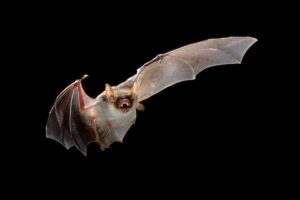Even though mammals are everywhere, mammals that can fly like birds are rare. Think of an animal. There is a pretty good chance that it will turn out to be a mammal. We human beings too come in the class Mammalia. Mammals differ from the oviparous animals in the form of reproduction. Oviparous animals lay eggs, like birds, which can also fly.
Before we proceed further, let’s take a look at some interesting facts about mammals:
- Mammals give birth to live babies, in contrast to oviparous animals where the baby develops inside the egg.
- Mammals are warm-blooded. Their body temperature remains pretty much the same irrespective of the surroundings.
- Mammals are highly intelligent species and have a much more developed brain than other animals.
- There are around 4,500 to 5,500 species of mammals!
- Mammals cannot fly. Well except one.
Flying creatures which can fly in and out almost anywhere have fascinated human beings since time immemorial. There has always been an innate desire within every being to be able to fly and to touch the clouds. Though finding a mammal that can fly is a rarity. There is however one mammal which can make all the other species in the Mammalia kingdom jealous.
Bats are the only Mammals that can Fly like Birds
Bat is the only mammal that can fly. It does come as a surprise, considering the wide range of species which are encapsulated in the Mammalia kingdom. Though there has been a notion that animals like flying squirrels, flying possums and colugos are some of the mammals that can fly, but in reality, they cannot. The most they can do is jump from one tree to the next. But those bat predators, creatures of the dark which you might find hanging upside down from tree bark or crowding up a dark cave truly are the only flying mammals.

Bats are very fascinating and secretive creatures which become active only at night. You wouldn’t normally find a bat in the morning (until it itself comes looking for you, like maybe Batman). Bats belong to the order Chiropetra, having forelimbs which develop over time into wings which enable them to fly. Just like a kite, which you might love to fly on a holiday, their wings are stretched tightly between the two peripheral limbs. In other words, it is just a layer of skin held together by connective tissues without any trace of flesh in it.
We know that bats love blood. Bats are predators of the dark which have been portrayed many a time as blood-sucking creatures. But apart from that, what do these flying mammals eat? Turns out, they are pretty versatile in their food options. Bats are insectivorous creatures. This means that they can feed on other smaller insects for fulfilling their dietary requirements. Apart from that, some bats are also frugivores, meaning that they can feed on fruits too.
In spite of being the only mammals that can fly, bats have a pretty aerodynamic wing structure and flying pattern. Bats have flexible finger bones having low cross-sectional area which makes the wings lighter and aids in flight. The wings are translucent, meaning that you can see through them and can run through the whole length of the body in some cases, starting from shoulder to the toes.

There’s a lot of physics involved while these mammals fly. For instance, bats undergo larger shearing stress but low bending stress while flying as compared to other flying animals. This is primarily because of its unique bone structure. Also, the bones on which the wings are supported are fragile, having a lower breaking stress point than the others. Bats can move upwards through the air by flapping their wings. This is known as “Lift”. Also, they can move forward, cutting through the air at a good enough speed. This is known as “Thrust”. By varying the shape and angle of the wings, bats can perform various kinds of manoeuvres in the air, steer themselves in various directions and also break the speed. They can cut through the air and dive at great speeds like no other animal.
Bats are very sensitive mammals too. They have touch receptors located along the length of their wings in the form of hair. These hairs can detect even the slightest of differences in the surrounding air and air pressure and alert them to any possible dangers. These touch receptors are known as Merkel cells, and they also help a bat determine the optimum speed with which it should fly to avoid any kind of damage. Merkels cells have also been a subject of study for scientists who have been devising ways to develop better and accurate sensor technology.

As we know already, bats are nocturnal animals which are mostly found hanging upside down when stationary. Well, this position is not just some random thing. It has a scientific term called “Roosting” attached to it. Bats have the unique ability to dive through the air and land upside down in this position. The roosting position may differ from one kind of bat to the other. While microbats have their necks craned backwards in this position, megabats position their necks much closer to their belly than the others. This happens because of the different cervical or vertebral structure. Also contrary to what it will do to humans, roosting doesn’t affect the brain of the bats as there is no backflow of blood.
Bats can emit ultrasonic sound waves to form echoes, a phenomenon known as echolocation. It works on the principle that sound gets reflected back from a nearby obstacle, producing an echo which can then help the creature in determining the best possible path. This is also made possible with the help of their highly sensitive ears which can detect even the faintest of sound and to compensate for their mesopic vision which helps them see only faint levels of light.
Hence, it might be safe to say that apart from being the only mammal that can fly, bats have a host of other unique qualities which makes them stand apart. Sure they might seem a bit scary and boring, but then as we all know, you can never judge a book by its cover.







